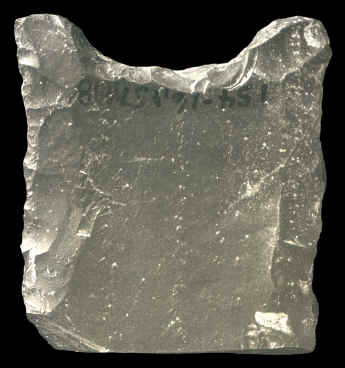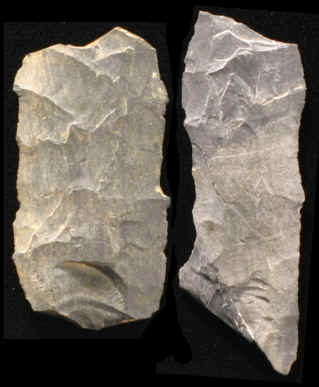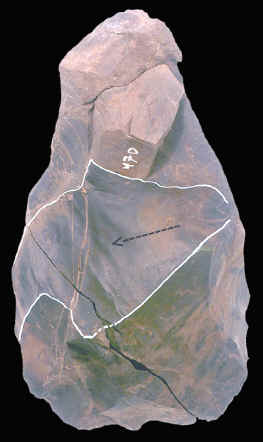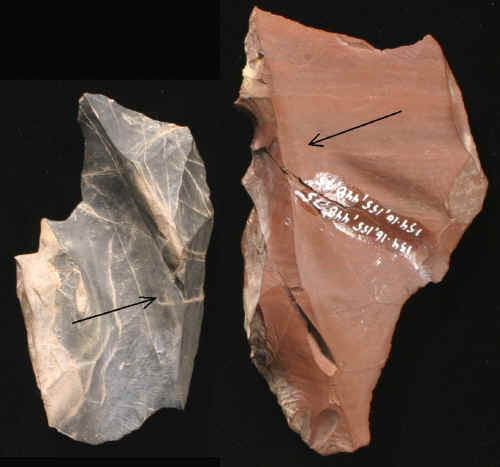|
|
|
|
|
|
|
Robson
Bonnichsen and |
|
|
The paramount attractions for ancient occupants of the Thoroughfare undoubtedly were nearby outcrops of Cambro- Ordovician chert ("Munsungan chert") associated with a series of volcanic and sedimentary rocks (Pollock et al. 1999). Distinctive Munsungan chert, often multi-colored and rich in fossil radiolarians, has been observed on prehistoric sites throughout New England. It is a common raw material at the monumental Bull Brook fluted point site near Ipswich, Massachusetts, and it dominates the lithic assemblages of the Wheeler Dam Clovis sites, northern Oxford County, Western Maine Highlands (Gramly 2005). The distance between Munsungan Lake and Wheeler Dam is a full 200-km over broken terrain. Possible occurrences of Munsungan chert at Paleo-American sites have been noted in New Hampshire and Vermont, and perhaps as far afield as the Hudson River valley. |
|
|
The excavation of the Windy City site and other Paleo-American manifestations at Musungan/Chase Lakes culminated in a series of unpublished working papers issued under Robson Bonnichsen’s direction and now on file at the Maine State Museum, Augusta. Technical papers about soil chemistry of the Munsungan sites (Konrad et al. 1983) and environmental reconstruction (Bonnichsen et al. 1985) have appeared; however, their impacts appear to have been negligible upon the archaeological community. Also a disappointment is the fact that a dissertation by James Payne -- former graduate student of Robson Bonnichsen at the now-defunct Institute of Quaternary Studies, University of Maine at Orono – dealing with the Windy City lithic assemblage has gone unpublished. Payne’s work, "Windy City (154-16): A Paleo-Indian Lithic Workshop in Northern Maine," is noteworthy for an elegant analysis of refitted flakes and matching bifaces and cores. Several "lithic reduction events" were recognized within the Windy City assemblage. |
|
|
Nowhere, even in general review articles such as one written for "Prehistoric Archaeology in the Maritime Provinces" (1991, see essay by Bonnichsen, Keenlyside and Turnmire) is the cultural identity of the Windy City site or that of other Munsungan/Chase Lakes Paleo-American encampments emphasized. The question: Are these sites, in fact, Clovis? is never posed and, therefore, never answered. It is no wonder, then, that Clovis culture is thought not to have existed in New England. Archaeologists have succeeded in keeping the light of knowledge "under a bushel." |
|
| CONTINUE ON TO PAGE THREE | |
|
"REFERENCES" Bonnichsen, Robson, George L.
Jacobson, Jr., Ronald B. Davis, and Harold W. Borns, Jr. Richard Michael Gramly
|
|




